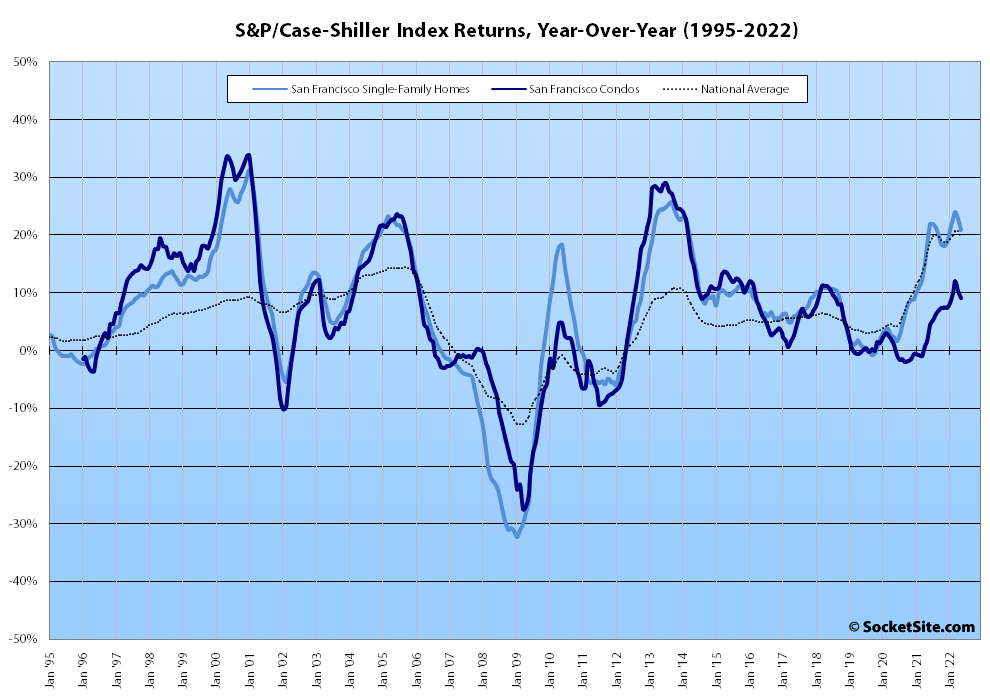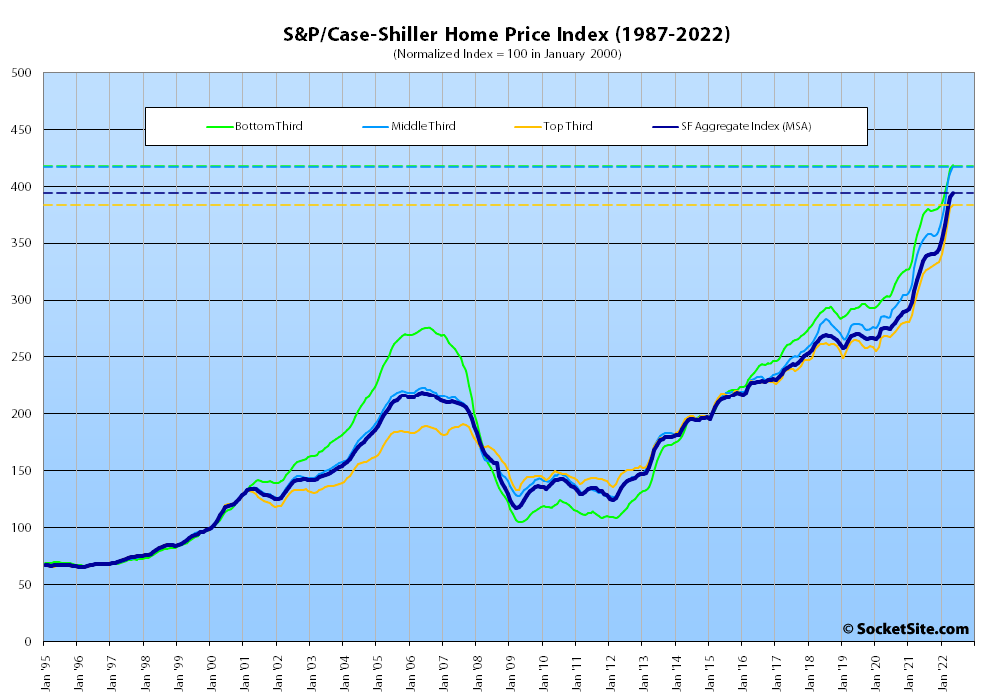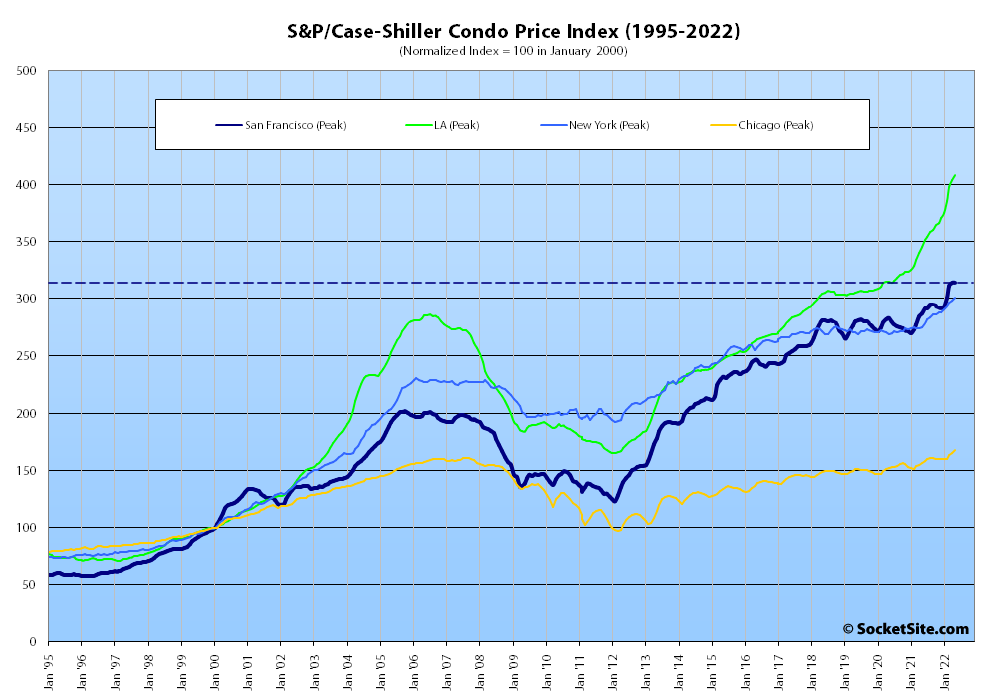Having ticked up 2.2 percent in April, the S&P CoreLogic Case-Shiller Index for single-family home values within the San Francisco Metropolitan Area – which includes the East Bay, North Bay and Peninsula – inched up 0.9 percent in May for a year-over-year gain of 20.9 percent, which was down from a year-over-year gain of 22.9 percent in April and a localized peak of 24.1 percent in March.
At a more granular level, the index for the least expensive third of the Bay Area market inched up 0.8 percent in May for a year-over-year gain of 14.7 percent; the index for the middle tier of the market ticked up 1.6 percent for a year-over-year gain of 20.1 percent; and the index for the top third of the market inched up 0.9 percent for a year-over-year gain of 22.2 percent.
The index for Bay Area condo values, which remains a leading indicator for the market as a whole, was unchanged in May with a year-over-year gain of 9.1 percent, which was down from a 10.3 percent year-over-year gain in April and a localized peak of 12.0 percent in March and versus year-over-year gains of 18.2 percent, 7.3 percent and 9.4 percent in Los Angeles, Chicago and New York respectively.
And nationally, Tampa once again led the way with respect to exuberantly indexed home price gains, up 36.1 percent on a year-over-year basis, followed by Miami (up 34.0 percent) and now Dallas (up 30.8 percent) which displaced Phoenix (up 29.7 percent) for third place spot.
Our standard SocketSite S&P/Case-Shiller footnote: The S&P/Case-Shiller home price indices include San Francisco, San Mateo, Marin, Contra Costa and Alameda in the “San Francisco” index (i.e., greater MSA) and are imperfect in factoring out changes in property values due to improvements versus appreciation (although they try their best).



what’s with all the graphs lately?
Think of it as thousand-fold reduction in data transmission.